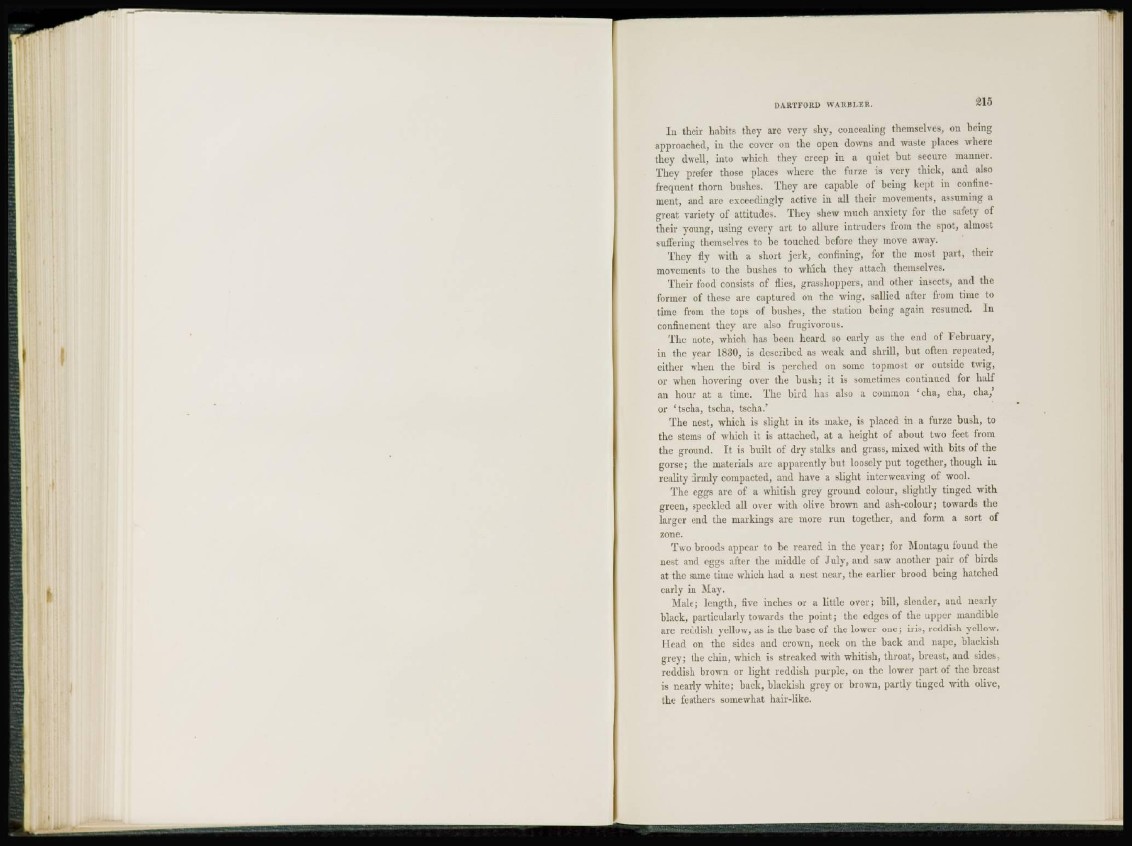
I n their habits they are very shy, concealing themselves, on being
approached, in the cover on the open downs and waste places where
they dwell, into which they creep in a quiet but secure manner.
They prefer those places where the furze is very thick, and also
frequent thorn bushes. They are capable of being kept in confinement,
and arc exceedingly active in all their movements, assuming a
great variety of attitudes. They shew much anxiety for the safety oí
their young, using every art to allure intruders from the spot, almost
suffering themselves to be touched before they move away.
They fly with a short jerk, confining, for the most part, their
movements to the bushes to which they attach themselves.
Their food consists of flics, grasshoppers, and other insects, and the
former of these are captured on the wing, sallied alter from time to
time from the tops of bushes, the station being again resumed. In
confinement they are also frugivorous.
The note, which has been heard so early as the end of February,
in the year 1830, is described as weak and shrill, but often repeated,
cither when the bird is perched on some topmost or outside twig,
or when hovering over the bush; it is sometimes continued for half
an hour at a time. The bird has also a common 1 cha, cha, cha/
or 'tscha, tscha, tscha.'
The nest, which is slight in its make, is placed in a furze bush, to
the stems of which it is attached, at a height of about two feet from
the ground. It is built of dry stalks and grass, mixed with bits of the
gorse; the materials are apparently but loosely put together, though in
reality firmly compacted, and have a slight interweaving of wool.
The eggs are of a whitish grey ground colour, slightly tinged with
green, speckled all over with olive brown and ash-colour; towards the
larger end the markings are more run together, and form a sort of
zone.
Two broods appear to be reared in the year; for Montagu found the
nest and eggs after the middle of July, and saw another pair of birds
at the same time which had a nest near, the earlier brood being hatched
early in May.
Male; length, five inches or a little over; bill, slender, and nearlyblack,
particularly towards the point; the edges of the upper mandible
are reddish yellow, as is the base of the lower one; his, reddish yellow.
Head on the sides and crown, neck on the back and nape, blackish
grey; the chin, which is streaked with whitish, throat, breast, and sides
reddish brown or light reddish purple, on the lower part of the breast
is nearly white; back, blackish grey or brown, partly tinged with olive,
the feathers somewhat hair-like.